Tencent is and has almost always been in a deadly fight against its arch-rival Alibaba for the domination of online payment, social sharing, e-commerce and more.
The release of “recommended products” (好物圈) inside WeChat is, therefore, a major move for WeChat to move closer to e-commerce and compete against Alibaba. Let’s take a closer look at this feature.
What is the “recommended products” (好物圈) feature?
That feature is called Haowuquan (好物圈), which roughly translates to “good products circle”.
It can be accessed from the “Search” section of the WeChat “Discovery” tab of WeChat.
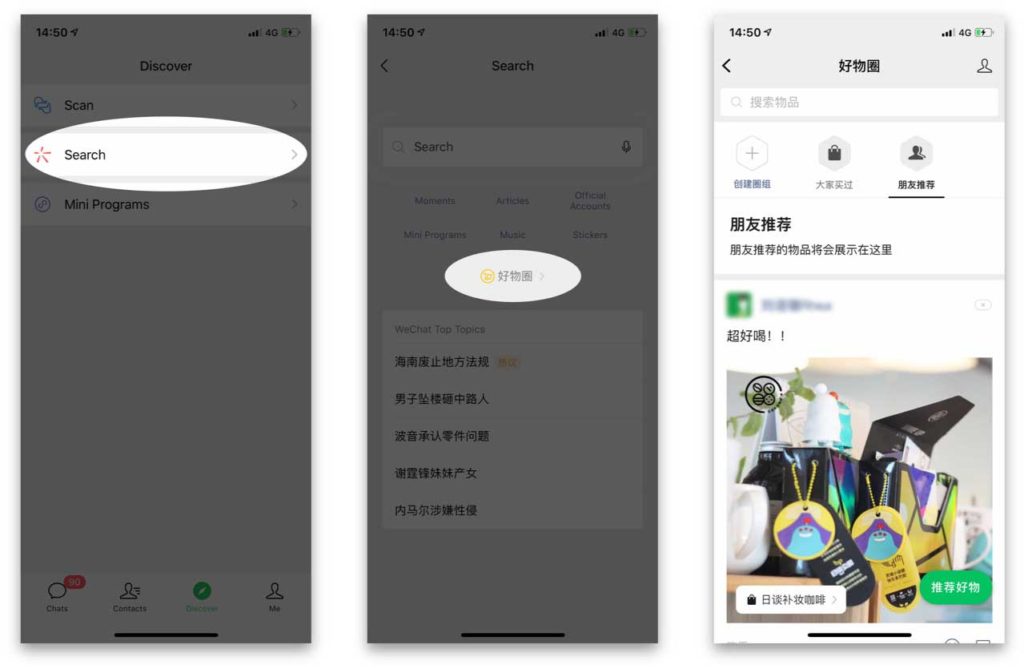
The section is divided in 3 main sub-sections:
- Friends Recommendations (朋友推荐): which features products shared by friends on the “recommended products” section
- Everybody bought (大家买过): features products which have been bought by many people, or by at least one friend. In this feature, friends don’t need to explicitly share the product, but the name of the friend who bought the product will not be displayed
- Circle Group(圈组): private friend groups (invite-only) to share recommended products
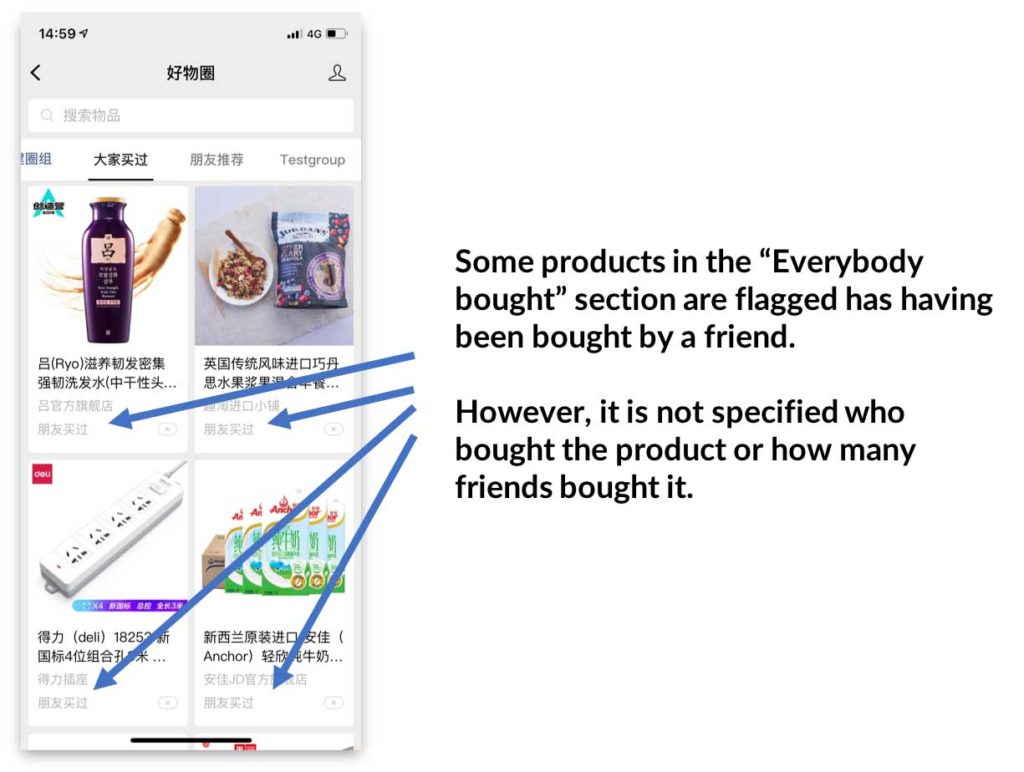
The English UX interface is different from the Chinese interface. The feature is still being tested by WeChat.
In the Chinese interface, it used to be that you could see how many of your friends bought one particular product. It has been changed over the past 2 weeks, likely due to violation of users’ privacy.
How are products shown on the “recommended products” section?
Manual sharing
It is possible for any user to share products on the “recommended products” section.
Option 1: sharing from a picture
Users can manually share any picture on the “recommended products” section. In order to do so, they can take a picture with their phone, and then look for a product to associate with the picture.
The mini-program database lists all of the products which have been submitted to the mini-program API, which includes all of JD.com products or products sold on Weidian/Youzan stores.
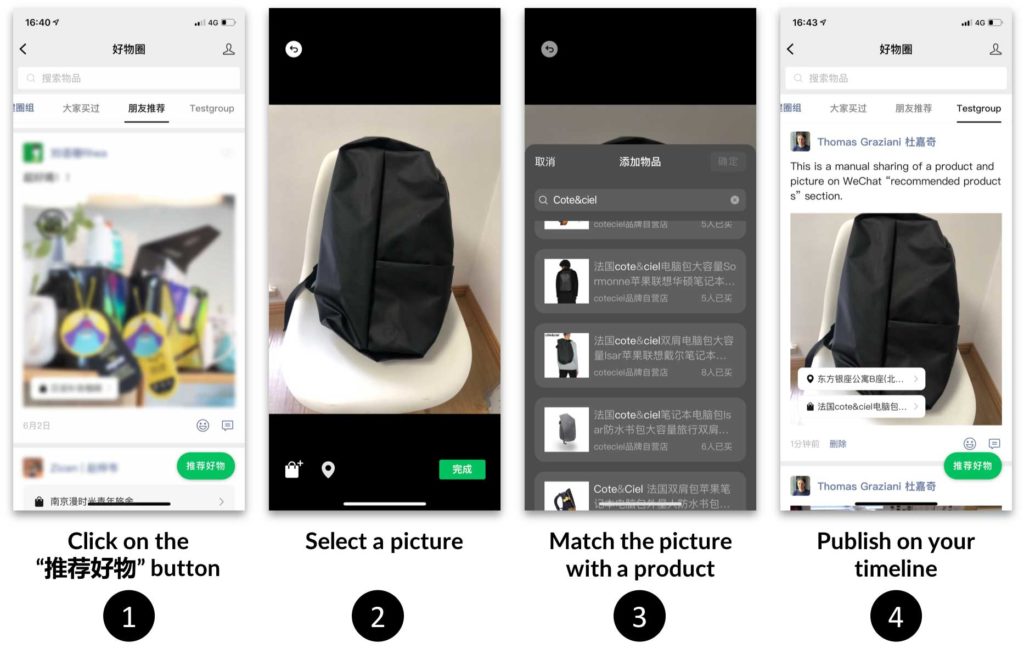
Option 2: sharing from a product mini-program
Mini-programs can give the option to share a product on the “recommended products” section among their sharing options.
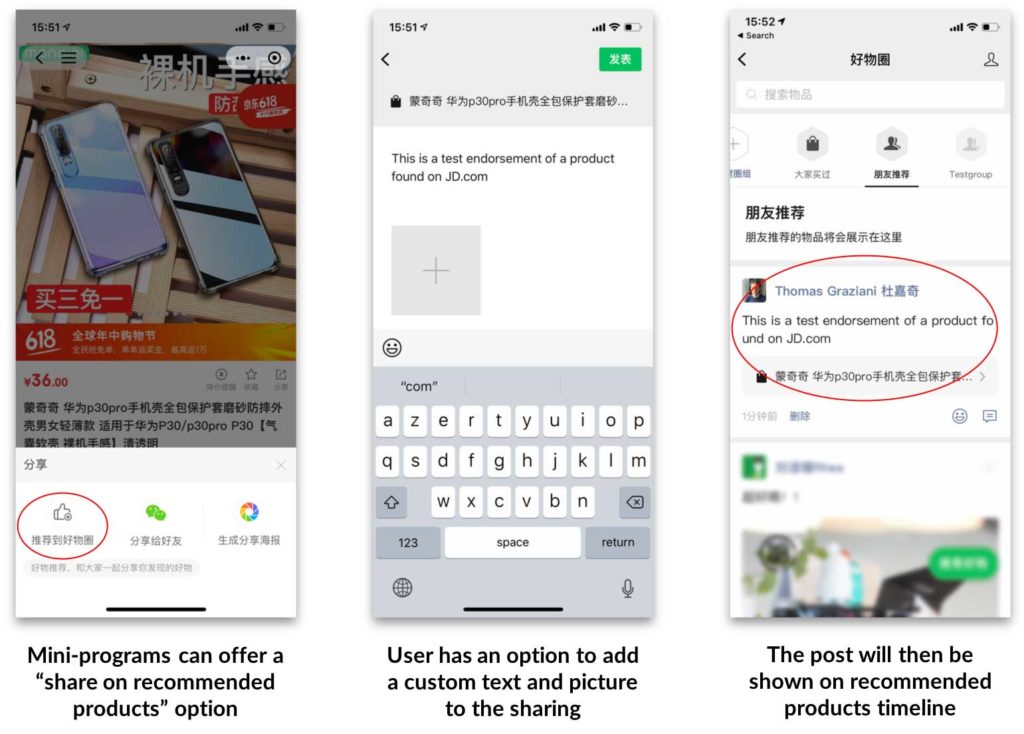
Once the post is shared, friends can click on it to access the min-program store. They will however not be directly redirected to the mini-program: they will first access a product description page that they can bookmark.
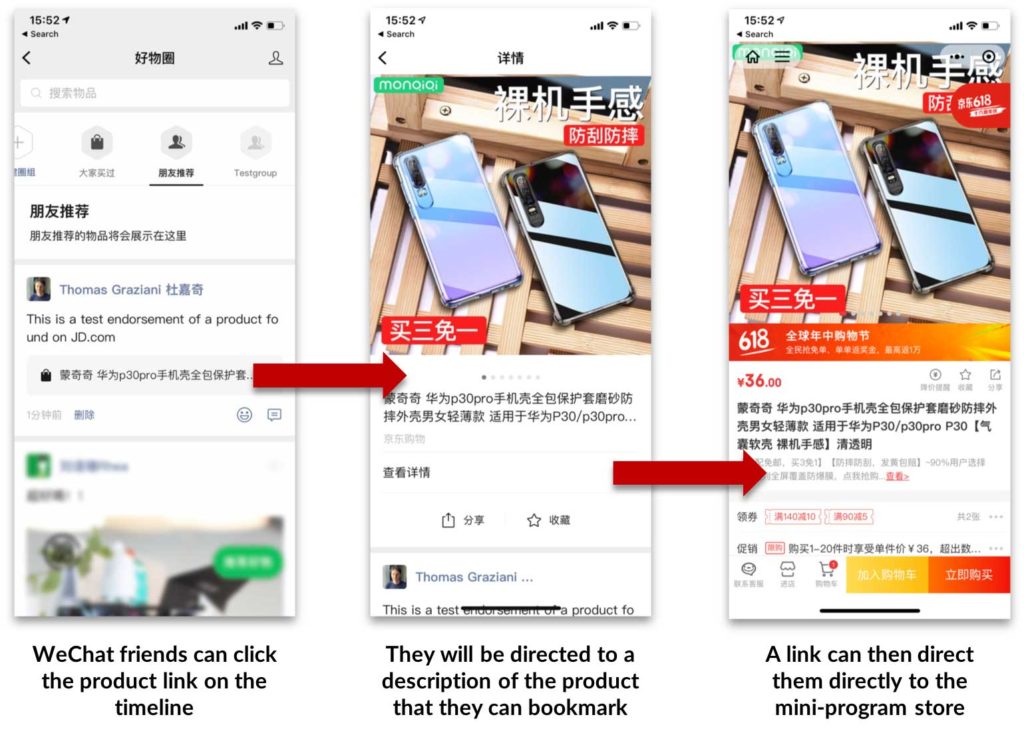
Automated sharing
If you purchase a product which was integrated with the mini-program API, it might automatically show in the “everybody bought” section of your friends.
This automated “sharing” doesn’t require any action from the user but preserves anonymity by not displaying the user’s name or the number of friends who purchased each product.
The next question is: how can brands integrate with the WeChat Mini-program API and enable sharing on “recommended products”?
Integration with the “recommended products” API
Step 1: listing products in the Mini-program database
The first step is to upload products to the WeChat Mini-program API. This will make products searchable when users want to share a picture or product on their timeline.
The link to the API documentation is the following: https://wsad.weixin.qq.com/wsad/zh_CN/htmledition/order/html/document/goods/query.part.html
Step 2: submitting orders to the “recommended products” API
The second step is to ensure that each order is submitted to the “recommended products” API. This will enable the products to display in the “everybody bought” section after a customer bought them.
The link to the API documentation is the following: https://wsad.weixin.qq.com/wsad/zh_CN/htmledition/order/html/document/orderlist/import.part.html
What is the impact of the “recommended products” feature?
This new feature can at first sight appear of little relevance. It comes with several downsides:
- Traffic issue: It is fairly unlikely that a lot of WeChat users will start flocking to the App’s search section in order to look for products to buy. This is not in the habit of a typical WeChat user.
- UX issue: The feature’s UX isn’t perfect. For instance, it could seem more intuitive that clicking on the product link on the timeline would automatically open the mini-program store (instead, it only opens an intermediary page which can be bookmarked)
However, WeChat could decide to drive more traffic to the “Recommended Product” feature by modifying the user path. This is a typical WeChat strategy:
- Testing a new feature within a 3rd-level menu (Discover tab/Search/Recommended Product)
- Testing different approaches to the feature on sub-groups of WeChat users
- If the feature is popular, WeChat could give it a more direct access
Mini Programs, Search搜一搜, Look看一看 all went through this testing period.
It could mean a significant shift into WeChat strategy. In particular, it means that Tencent is starting to leverage all of his e-commerce investments (JD.com, VIPshop, Secoo, and Farfetch through JD.com) and connect them to social data.
By ensuring a flow of data between e-commerce and social, and by making the products easily accessible within the WeChat ecosystem, Tencent is taking a leap forward in its competition against Alibaba.
This integration also offers significant opportunities in terms of improvement of CRM retargeting and ads targeting, blending social and store data.
Conclusion
The “recommended products” feature is still in its early stage, and on the short run it will likely not generate a significant amount of sales for brands.
However, it highlights a broader trend of WeChat integrating social and e-commerce data, enabling a smoother conversion between social sharing and e-commerce.
The opportunities opened for brands in terms of CRM, ads retargeting and social e-commerce will be significant for brands and retailers alike.

